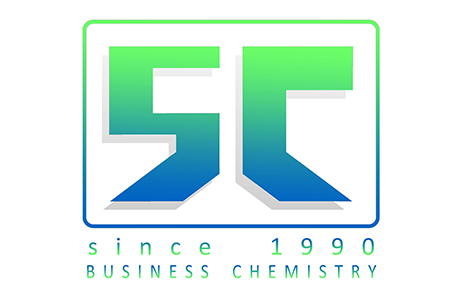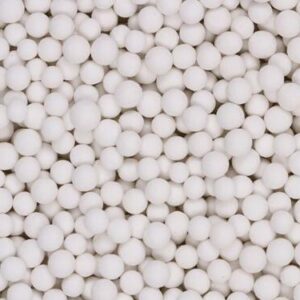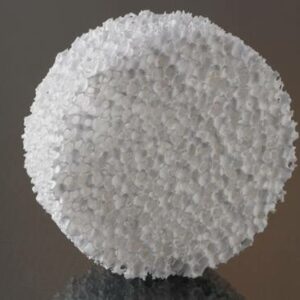Description
Maximize Propylene yield Catalyst
Description
MMC/DMMC/RMMC catalysts are suitable for DCC units that use heavy distillate oil as feedstock
under suitable technological conditions to produce low-carbon olefins, especially to maximize
propylene. The use of multiple active components mainly composed of ZSP zeolite containing
phosphorus and transition metals improves the stability of hydrothermal activity, increases the
dehydrogenation of small molecular hydrocarbons, further converts alkanes into alkenes, and
improves the yield of low-carbon alkenes, especially the propylene yield. The catalyst formula
design also enhances the macromolecular cracking ability and improves the resistance to heavy
metal contamination. The mesoporous molecular sieve, novel macroporous matrix technology
with high hydrothermal stability and metal contamination resistance, and modified beta zeolite
are adopted to further improve the combination of the main active components and auxiliary
active components, and strengthen the secondary cracking.
The yield of propylene can reach more than 23% from paraffinic feedstock, and more than 18%
from intermediate feedstock.
Application
MMC/DMMC/RMMC
Deep Catalytic Cracking Unit
——————————————————————————————————————–
High butylene selectivity Catalyst
Description
High butylene selectivity FCC catalyst (HBC catalyst) is featured to boost butylene production
while maintaining LPG yield, or boost butylene and propylene production at the same time. HBC
catalyst is formulated via Target Oriented Technology (TOT). Through TOT technology, Modified
Y zeolite is used to promote C5-C12 olefins production, which are the potential precursors for
butylene formation. Modified β zeolite is used to promote selective cracking of olefins into
butylene through the tailored porous structure where isomerization intermediates are well
retained. In addition, ZSM-5 zeolite can be used to modulate propylene and butylene production
with the increase of LPG yield.
The commercial application of HBC catalyst demonstrates that both butylene yield and butylene
selectivity in LPG increase, as compared to the conventional incumbent catalyst. It also shows
improved bottom cracking ability and less coke formation.
Application
HBC
FCC unit
——————————————————————————————————————–
Maximize Gasoline yield Catalyst
Description
GDmax/HGY/VSG Series catalysts are suitable for processing VGO or heavy oil in FCC unit,
featured by their high gasoline yield with high octane number and low olefin content in the
gasoline product. The catalysts adopt the novel structure-optimized zeolite (SOZ) as the main
active component with high accessibility of reactants and/or the reactive intermediates. The
SOZ has more mesopores because of the removal of extra-framework aluminum. Compared to
the conventional USY zeolite, these larger pores significantly promote the diffusion of larger
molecules presented in the feed stream through the zeolite crystals of the FCC catalyst, while
preventing the further conversion of valuable cracking products via thermal cracking, hydrogen
transfer and other reactions.
Compared to the reference catalyst, the gasoline yield increases by 2%, olefin content of
gasoline decreases by 6.9% and coke yield decreases by 0.23%.
Application
GDmax/HGY/VSG
FCC/RFCC unit
——————————————————————————————————————–
Maximize LCO yield Catalyst
Description
The MLC/CC-20D series catalysts are used to improve the yield of LCO in the FCC process, and
have the apparent effect on raising the LCO-to-gasoline ratio. The cracking activity of matrix
and zeolite is carefully tailored. Active alumina and alumina sol are integrated to strengthen the
cracking of heavy oil and optimize the selectivity. Ultra-stable Y zeolite is modified to adjust the
acidity to promote the cracking of large molecule and inhibit secondary cracking of intermediate
fractions.
Commercial application results show that hydrocarbons in feedstock can be selectively cracked
to target distillates. LCO yield increases by 8.62%, and the yield of light oil and total liquid
product are improved accordingly.
Application
MLC/CC-20D
FCC/RFCC unit
——————————————————————————————————————–
Gasoline Sulfur Reduction Catalyst
Description
DOS Series Catalyst is used to reduce the sulfur content of the FCC gasoline without affecting
the hydrogen transfer activity and cracking activity of the catalyst while processing FCC
feedstock with high sulfur content. It can reduce slurry and coke yield, meanwhile, increase the
total yields of LPG, gasoline and diesel. New generation modified Y zeolite (DOSY) is developed,
that enhances active site accessibility and trap vanadium particularly. ZDOS, CDOS and CDOS-P
adopt DOSY as active component,and use the matrix with proper cracking activity and wide
pore size distribution, which mainly focus on metal tolerance and bottom cracking.
Commercial application results show that sulfur content in gasoline can drop by 19.4w%.
Application
DOS/CDOS/ZDOS
FCC/RFCC unit
——————————————————————————————————————–
Boosting High Octane Gasoline Production Catalyst
Description
ROC series catalyst containing a new matrix and small size Y is designed for increasing the
gasoline yield, the RON and the bottom conversion with less coke formation while processing
hydrotreated residue or VGO (vacuum gasoline oil) feedstock. A novel matrix material with low
coking, high activity and large pore size has been developed. Small size Y zeolite with high
framework stability is developed to solve the contradiction between reducing acid center density
(reducing the probability of bimolecular reaction) and increasing the number of B acid center
(promoting ring-opening cracking).
Application
ROC
FCC/RFCC unit
——————————————————————————————————————–
Bottom Cracking Catalyst
Description
RSC series catalyst has been developed for cracking heavy oil to reduce slurry and coke yields
based on the SDM (silica-dominated matrix) technology platform. The SDM is designed to be
easily accessible for the large hydrocarbon molecules by optimizing its porosity. The SDM is
prepared with high activity to effectively pre-crack the inferior feeds with low saturates content
which are difficult to crack. The SDM contains components which can improve the metal
tolerance ability. The pore structure, activity and metal tolerance ability of the SDM can be tuned
easily to meet the feeds and processing demands by varying its components and preparing
process. Some zeolite modification technology, for example, dealumination and silicon insertion
technology, cleaning channels technology, optimizing exchange degree and intra-crystal position
of rare earth technology, have been applied to RSC series catalyst to ensure their high activity,
good thermal and hydrothermal stability and excellent selectivity.
Application
RSC/CRSC
FCC/RFCC unit








Reviews
There are no reviews yet.